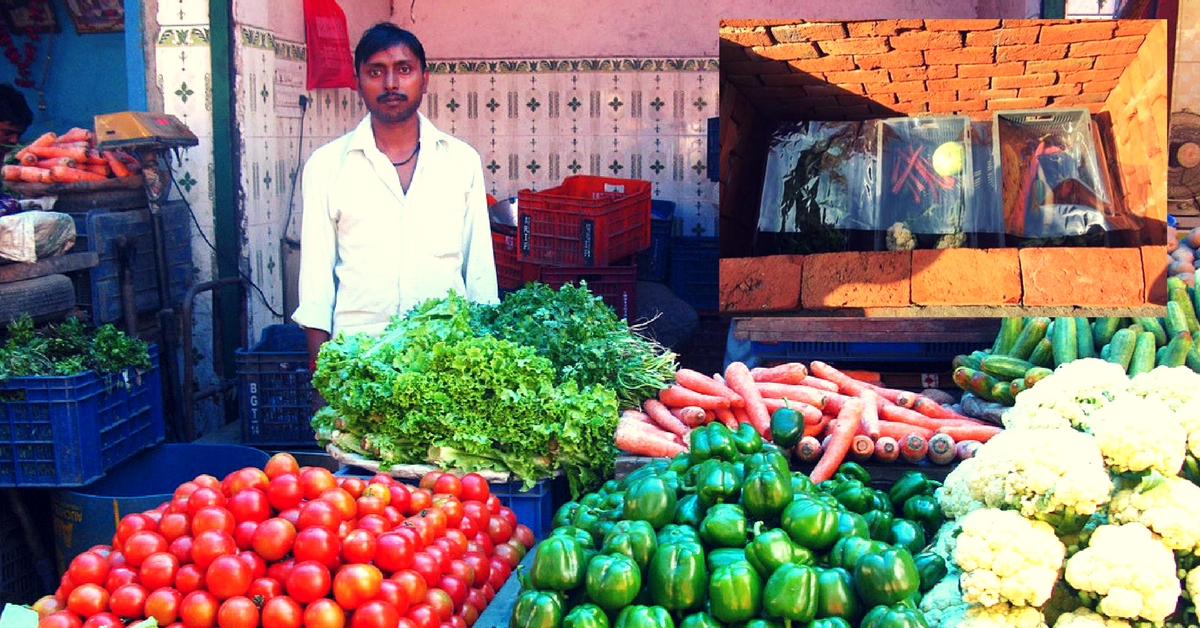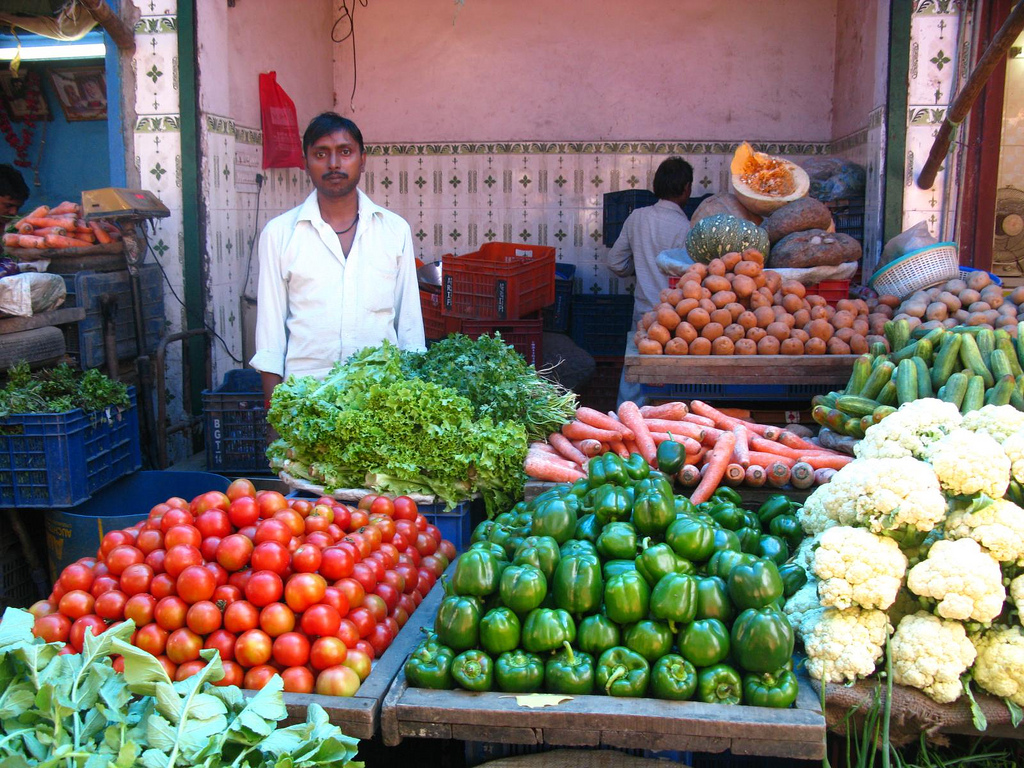Class 12 Girl Innovates Magic Fridge That Needs No Electricity & Minimizes Food Wastage Too
Class 12 student, Dikshita Khullar, designs a ‘magic-fridge’, that runs without electricity and is expected to help farmers and middlemen who deal with fruits and vegetables everyday.

India wastes roughly 67 million tonnes of food every year, according to a government study, reported the Hindustan Times. To make better sense of that number, it is more than the national output of Britain.
Yet India has one of the highest rates of child malnourishment in the world. The painfully obvious question being – Why does so much food get wasted?
Well, a large reason happens to be the lack of storage facilities that cripple farmers and vegetable/fruit vendors.
In an ingenious move to tackle this issue, Dikshita Khullar, a class 12 student from G.D. Goenka Public School in Vasant Kunj, New Delhi, designed a prototype of a ‘magic-fridge’, which can run without electricity. It is expected to help farmers and middlemen whose produce run the risk of rotting everyday.

In an interview with NDTV, Dikshita said she has always been inclined to finding sustainable solutions for environmental issues. Through the concept of evaporative cooling, which is when liquid water evaporates from a surface and hence decreases the temperature, the prototype was built with easily available materials such as bricks, sand, jute bags and bamboo sticks, which are cost effective for farmers too, says Dikshita.
Explaining the intricacies of the model, she said,“Imagine one big rectangular structure constructed with bricks and another small rectangular structure built inside the big rectangular chamber. The catch is to leave some space in-between both of these structures so that it can be filled with sand. The upper part of the chamber is covered with the bamboo lid and that’s all that there is to this structure.”
The cost of the fridge is estimated at Rs.4000, with chambers that can hold up to 6 crates or 120 kg of vegetables, which can be kept fresh for up to 7 days.
Read more: How an Auto with Gull-Wings Will Help Mumbaikars Tinker, Innovate and Have Fun
“The methodology is simple, the vegetable vendors have to water the chamber every 2-hours because that’s what will keep the inside area cool. This chamber can keep the temperature 10-15 degree Celsius lower than the outside temperature and maintain about 90% relative humidity,” she shared with the channel.
Dikshita built the first model in her village of Sultanpur, Delhi, and another one in the Manger village of Haryana.
Kanhiya Lal, a local vegetable vendor from Manger, is all praises for the innovation. He told NDTV, “This is like a magic-fridge, it has helped me reduce post-harvest losses and has also raised the value of my vegetable stock in the glut period.”
Despite being the second largest producer of wheat in the world, the fact that millions of people die every year because of hunger angers the young innovator. “I want to put an end to this sad yet true reality,” she said.
Like this story? Or have something to share?
Write to us: [email protected]
Connect with us on Facebook and Twitter.
NEW: Click here to get positive news on WhatsApp!
If you found our stories insightful, informative, or even just enjoyable, we invite you to consider making a voluntary payment to support the work we do at The Better India. Your contribution helps us continue producing quality content that educates, inspires, and drives positive change.
Choose one of the payment options below for your contribution-
By paying for the stories you value, you directly contribute to sustaining our efforts focused on making a difference in the world. Together, let’s ensure that impactful stories continue to be told and shared, enriching lives and communities alike.
Thank you for your support. Here are some frequently asked questions you might find helpful to know why you are contributing?


This story made me
-
97
-
121
-
89
-
167











